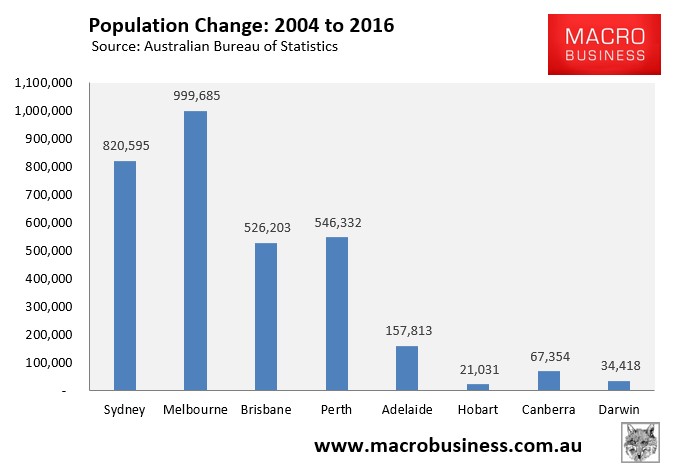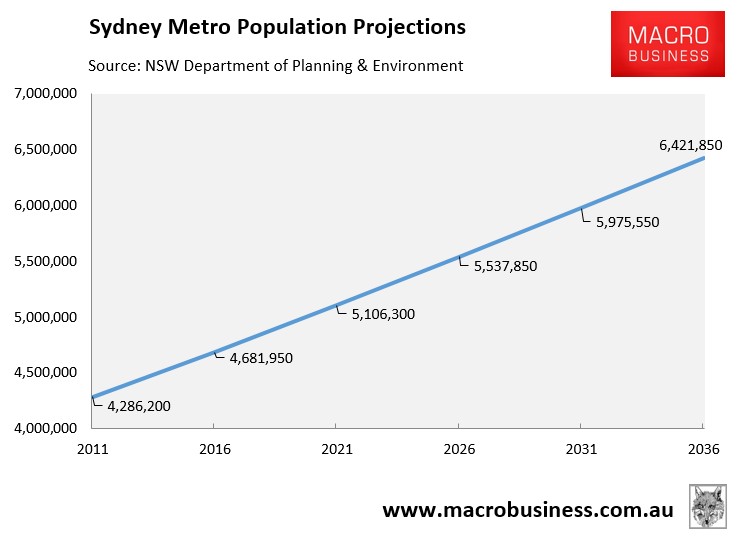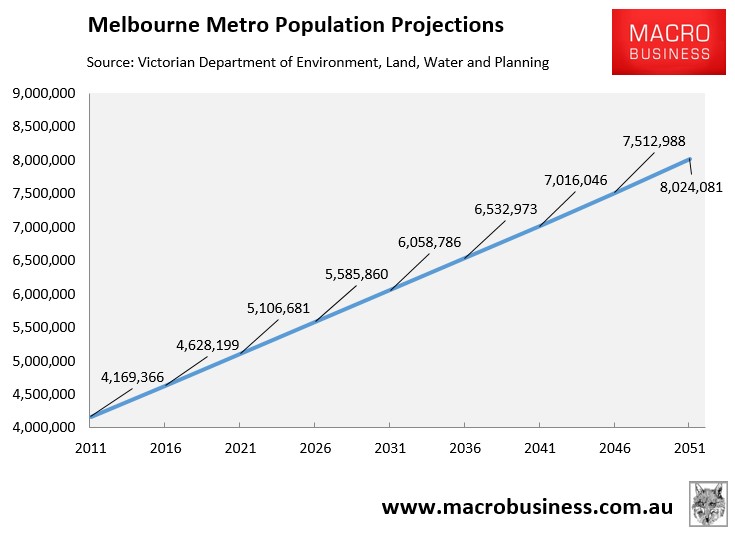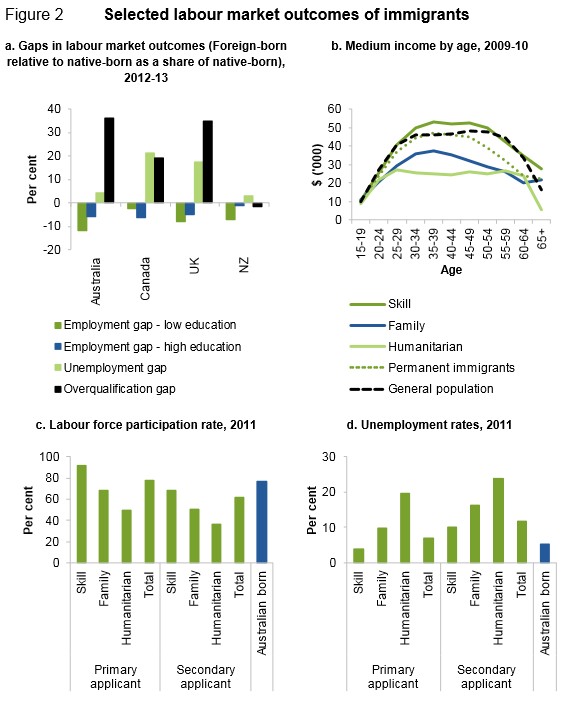If you want a prime example of how nonsensical supporters of mass immigration and a ‘big Australia’ have become, look no further than the below arguments from the Institute of Public Affairs’ (IPA) media and communications manager, Evan Mulholland, which were published in Fairfax yesterday.
I know what you’re thinking, who cares what a junior media and communications [read propaganda] manager thinks? It’s like they’re not even trying any more. But Domainfax saw fit to publish it so let’s examine Mullholland’s key arguments for fun:
Tony Abbott has said the government could ease housing demand by scaling back immigration “at least until land release and infrastructure can keep up”. Pauline Hanson and several other conservatives like Cory Bernardi and Mark Latham have all floated similar ideas in recent weeks.
This approach is not only wrong, but it is also short-sighted and dangerous.
Yes, reducing immigration will put downward pressure on housing prices, just as any reduction in demand would. But its effects are overstated: very few migrants are so cashed up that they are instantly able to purchase a home that would otherwise be bought by a young Australian. Far from being cashed up, most who migrate here seek a better life for themselves and their families and work hard to achieve it…
Do we really believe, in 2017, that well off migrants are buying housing stock and keeping us stuck in traffic on our roads?..
But the root cause of this problem [housing affordability] is not excessive demand, it is restricted supply. Rentals are also under pressure, with a recent report revealing the proportion of Australian households who rent is now 31 per cent, and 63 per cent of those renters are aged 35 or above.
…unlocking more supply is the only credible long-term way to put downward pressure on rents. And the way to achieve this is cutting red tape and reducing regulation on housing development.
Are we seriously expected to believe that the massive immigration-fueled population booms in the major capitals – which have boosted Melbourne’s population by 1 million (a 27% increase) and Sydney’s population by 821,000 (a 20% increase) over the past 12 years – are not significant drivers of house prices or traffic congestion in the two major cities?

And are we supposed to believe that the projected 87,000 people per year growth in Sydney and the projected 97,000 growth per year in Melbourne – which is driven primarily by immigration – will not have major impacts on both house prices and infrastructure going forward?


This whole notion that immigrants cannot afford to buy homes, therefore, they are not materially increasing demand for incumbent home buyers is laughable. On any given Saturday, go to any basket of auctions across Sydney or Melbourne and you will see that they are heavily represented by new or recent immigrants. Heck, entire suburbs in Melbourne – like Glen Waverley, Mount Waverley and Balwyn – have been completely transformed over the past decade into Chinese communities, with corresponding massive growth in house values. But somehow we are supposed to believe that immigration is not a significant driver of house prices?
The same goes for traffic congestion and infrastructure. You don’t have to be a rocket scientist see that increasing Melbourne’s population by 27% and Sydney’s by 20% in just 12 years has crush-loaded infrastructure, which has simply not kept pace with population growth.
Don’t just take my word for it, the Productivity Commission’s (PC) recent Migrant Intake into Australia report explicitly debunked Mullholland’s view noting that “high rates of immigration put upward pressure on land and housing prices in Australia’s largest cities” and therefore “it increases costs and thereby reduces the living standards for those entering the property market”. The PC also explicitly noted that “immigration, as a major source of population growth in Australia, contributes to congestion in the major cities…”.
Just last week, RBA governor Phil Lowe also explicitly noted that immigration-fueled population growth has been a key driver of demand in Sydney and Melbourne, which has placed significant pressure on housing and infrastructure:
On the demand side, population growth in Australia – especially in our largest cities – picked up unexpectedly in the mid 2000s and it is only in the past couple of years that the rate of home building has responded. This imbalance was compounded by insufficient investment in the transport infrastructure needed to support our growing population. Nothing increases the supply of well-located land like good transport links. Underinvestment in this area is one of the factors that has pushed housing prices up. Put simply, the supply side simply did not keep pace with the stronger demand side. The result has been higher prices”.
Former Treasury secretary, Ken Henry, also noted similar in his February speech:
Even with strong growth in the size of government and public debt, we do not have the infrastructure capacity to support today’s population, far less the population of the future.
How will we fund the biggest infrastructure build in our history? And what about infrastructure planning?…
On the basis of official projections of Australia’s population growth, our governments could be calling tenders for the design of a brand new city for two million people every five years; or a brand new city the size of Sydney or Melbourne every decade; or a brand new city the size of Newcastle or Canberra every year. Every year.
But that’s not what they are doing. Instead, they have decided that another 3 million people will be tacked onto Sydney and another 4 million onto Melbourne over the next 40 years.
Already, both cities stand out in global assessments of housing affordability and traffic congestion.
As has The Australian Institute’s Richard Denniss:
Australia’s population has grown by almost six million in the past 20 years and, as anyone commuting in a major city each morning knows, our infrastructure spending has not kept up. Schools in Sydney are now so overcrowded that some have had to stop children running in the playground…
It seems nearly everyone – except for the propagandists at the IPA – can see that immigration-fueled population growth has been a major driver of the housing and infrastructure woes that now exist in Sydney and Melbourne.
Back to Mullholland:
But there is a more fundamental point which Hanson and Co miss: immigration policy isn’t housing policy… In Australia, skilled migrants accounted for on average 67.7 per cent of our total immigration intake in 2015-16. These people make a great contribution to our economy.
The Migration Council of Australia’s report on the economic impact of migration found that our migration program up until 2050 will contribute $1.6 trillion to the Australian economy. Skilled immigrants and student visas in particular, are our most productive of all visa types.
This notion that immigrants are skilled and are, therefore, boosting productivity has been debunked by the PC’s latest report, which showed that immigrants overall have experienced lower median income, lower labour force participation, and higher unemployment than the general population:

Second, the boost to the overall economy from immigration is irrelevant. The key threshold issue that needs to be assessed is whether the current mass immigration settings are making incumbent residents better-off? Again, don’t just take my word for it – the PC noted the same in its latest report:
The Australian Government should… specify that the primary objective of immigration and the Government’s population policy is to maximise the economic, social and environmental wellbeing of the Australian community (existing Australian citizens and permanent residents) and their future offspring.
Unfortunately for Mullholland, the evidence does not support the notion that current mass immigration settings are making incumbent residents better-off. Quite the opposite, in fact.
In 2006, the PC completed a major study on the Economic Impacts of Migration and Population Growth, which modeled the impact of a 50% increase in the level of skilled migration over the 20 years to 2024-25 and found that “the incomes of existing resident workers grow more slowly than would otherwise be the case”.
The PC’s latest report, while it didn’t model distributional impacts from immigration, did find that real wages under existing mass immigration settings would be lower than would exist under zero net overseas migration (NOM):
Compared to the business-as-usual case, labour productivity is projected to be higher under the hypothetical zero NOM case — by around 2 per cent by 2060 (figure 10.5, panel b). The higher labour productivity is reflected in higher real wage receipts by the workforce in the zero NOM case.
Add in the huge costs of running a high immigration program and it is clear that mass immigration unambiguously lowers incumbent residents’ welfare. Again, a classic example is infrastructure, where the PC in 2013 warned that total private and public investment requirements over the next 50 years are estimated to be more than 5 times the cumulative investment made over the last half century. And this estimate was based on a lower population projection (38 million mid-century) than exists now (revised up to 40 million mid-century)!
In short, Mullholland needs to learn some basic economics as well as recognise that it is the living standards of the incumbent Australian population that is the threshold issue in the immigration debate. Living standards in the major cities are being unambiguously eroded by mass immigration via negative externalities that are not captured in the national economic accounts, such as increasing congestion, falling housing affordability, environmental degradation, etc.
Finally, pursuing high immigration is a growth fig leaf for governments and associated rent-seekers to pretend they’re doing the job rather than pursuing the more difficult but ultimately much wider benefits of productivity-directed reform. As a card carrying representative of the ‘growth lobby’, the IPA is merely talking their book.


